Keeping products safe during storage and shipping is a challenge. That’s why, many businesses rely on security tapes to prevent tampering. However, not all tapes offer the same level of protection. Standard adhesive tapes can be removed and reapplied without leaving a trace.
Partial transfer security tape, on other hand, offers a better approach. When peeled off, it leaves behind a printed message or pattern. This makes tampering easy to detect. In this article, we will explain what partial transfer security tape is and how it works. We will also compare it to other security tapes, explore its benefits, and discuss the best ways to use it.
What is Partial Transfer Security Tape?

Partial transfer security tape is a tamper-evident solution designed to reveal evidence of unauthorized access. When removed, it leaves behind a partial transfer of printed text or patterns on the application surface while retaining some adhesive on the tape itself. This irreversible change makes it clear that a package, carton, or container has been tampered with.
Unlike full transfer security tapes, which leave a strong adhesive residue, partial transfer tapes leave only a semi-tacky residue. This makes them ideal for surfaces like pallet film, pressed cardboard, and recycled cardboard—where excessive residue could be an issue.
Companies can also order custom versions with their logo, printed messages, or security patterns to enhance brand protection.
How Does Partial Transfer Security Tape Work?

Partial transfer security tape is built with multiple layers.
First layer is the substrate layer. This is the backing material. It holds the other layers.
Next, there’s the release coating layer. This is a thin layer. It controls how the adhesive splits.
Finally, there’s the adhesive itself. It’s designed to break apart. When the tape is removed, the release coating breaks. This causes some of the adhesive to stay behind. This creates the “OPENED” or “VOID” message. The process is simple, but effective.
Here’s a breakdown of the process:
- Substrate (Film): This is the top layer. It holds the other layers together.
- Adhesive: This layer is sticky. It’s made to split when pulled.
- Release Layer: This layer is weak. It allows the adhesive to split.
- Security Features: Some tapes have extra features. These can be hidden messages or colors.
- Imprinting: When the tape is removed, part of the adhesive stays behind, creating a visible message.
This message is a sign of tampering. It’s hard to fake, and makes the tape a good security tool.
Types of Partial Transfer Security Tapes
Standard Partial Transfer Security Tape
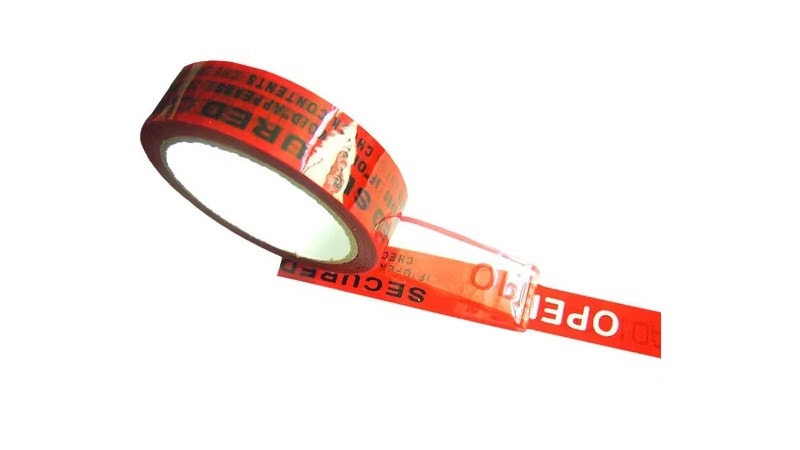
This is the most common type of partial transfer security tape. It provides a reliable way to detect tampering on packages, boxes, and containers. When removed, it leaves a partial transfer message on the application surface, showing clear evidence of interference. It is commonly used by stores and shipping companies.
The standard partial transfer security tape has a balanced adhesive. It sticks well but also transfers easily. It’s good for paper and cardboard. It’s not made for rough or slick surfaces. It provides basic security, and is good choice for those looking for a cost-effective solution.
High-Bond Partial Transfer Security Tape
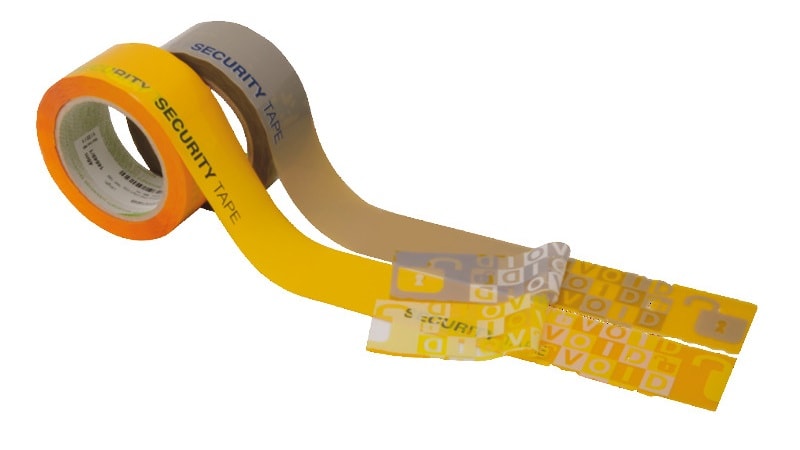
Some surfaces are hard to stick to. These are called high-energy surfaces. Metal and glass are examples. These materials have a smooth texture, making it harder for regular tape to stick firmly. Partial transfer security tape solves this problem. It has a strong adhesive. It sticks tightly to these surfaces.
This type is ideal for securing high-value shipments, electronic goods, and industrial equipment. This tape is made for tough conditions. It stays put even in heat or cold. It leaves a very clear transfer. The message is hard to remove. This makes it ideal for valuable items. It gives extra security.
Low-Energy Partial Transfer Security Tape
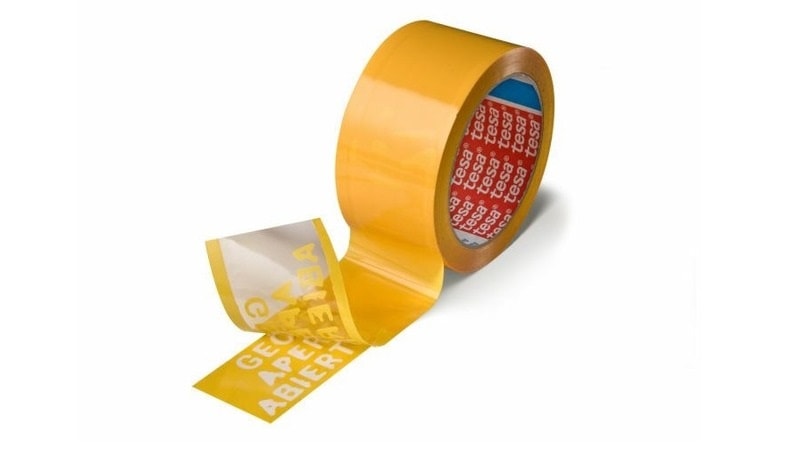
Plastic and some coated surfaces are low-energy surfaces. And regular tape does not stick well on them. That’s why, low-energy partial transfer security tape is designed for these surfaces. It has a special adhesive. This adhesive sticks to slick materials.
It works on surfaces that are hard to bond to. Examples include plastic bags and containers. It helps businesses secure goods drastically, while keeping packaging materials clean and reusable. Many companies choose this tape to protect shipments without leaving excessive residue or damaging the surface.
Applications for Partial Transfer Security Tape
Secures Packages and Shipments

Partial transfer tamper-evident tapes help secure packages and shipments from unauthorized access. When applied, the strong adhesive residue grips the application surface firmly.
If someone tries to remove it—a partially transferred message like “OPEN VOID” appears. This makes it clear that the package has been tampered with.
Businesses use these tapes on various kinds of shipments, including cartons, envelopes, and pallets. The semi-tacky residue ensures that once the tape is lifted, it cannot be reapplied without leaving visible evidence.
This cost-effective method reduces the risk of theft and product loss. Some trusted suppliers even offer free samples, allowing businesses to test the tape before ordering in large quantities.
Protects Goods in Transit
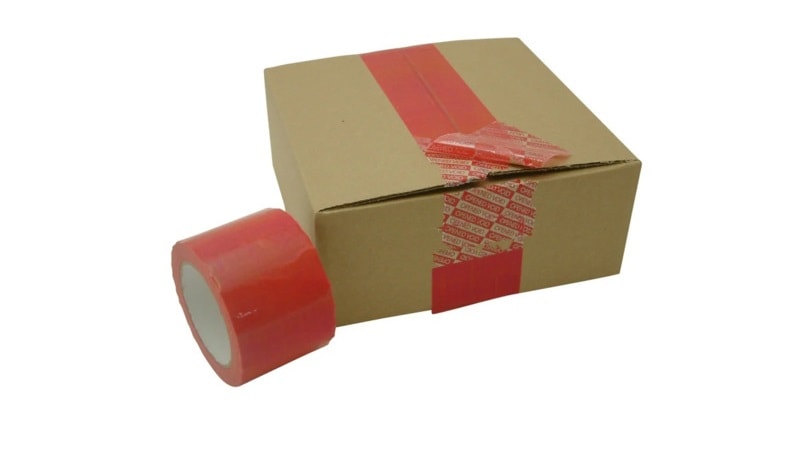
Shipments face risks during transit—including tampering, theft, and mishandling. Unlike standard carton sealing tapes, partial transfer security tapes provide a clear way to reveal evidence of interference. If the tape is disturbed, the irreversible change in its imprint warns handlers and recipients of possible issues.
These tapes work well on various kinds of surfaces, including plastic wrap, metal, and recycled cardboard. The semi-tacky residue ensures that even on rough materials, a partial imprint is left behind. This helps logistics companies reduce losses and maintain customer trust. Many businesses choose red tapes for higher visibility.
Prevents Theft and Tampering
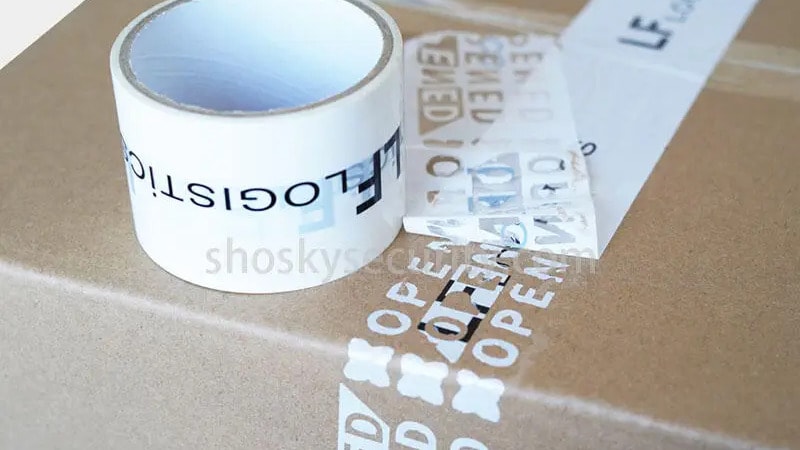
Tampering and theft can cause goods to be drastically affected, leading to financial loss. Partial transfer tamper-evident tapes make it difficult for thieves to access items undetected. Once removed, the tape leaves behind a strong adhesive residue, preventing resealing.
These tapes are used on labels, seals, and packaging materials to secure high-value shipments. The application surface matters when selecting the right tape, as different kinds are available for high-energy and low-energy materials. Companies often test free samples to find the most cost-effective method for their needs.
Provides a Visible Indication of Unauthorized Access

One of the main purposes of partial transfer security tape is to reveal evidence of tampering. If the tape is lifted, the “OPEN VOID” message or another security imprint appears. This makes it impossible to hide unauthorized access.
Industries such as logistics, retail, and pharmaceuticals rely on these security tapes for added protection. They ensure that if removal occurs, it leaves a lasting mark. The irreversible change in the packaging alerts recipients, helping them verify the integrity of their shipments. This cost-effective method improves security without requiring expensive tracking systems.
Partial Transfer Security Tape vs. Other Security Tapes
Security Tape Type | Pros | Cons |
Partial Transfer Security Tape |
|
|
Full Transfer Security Tape |
|
|
Non-Transfer Security Tape |
|
|
Best Practices for Using Partial Transfer Security Tape
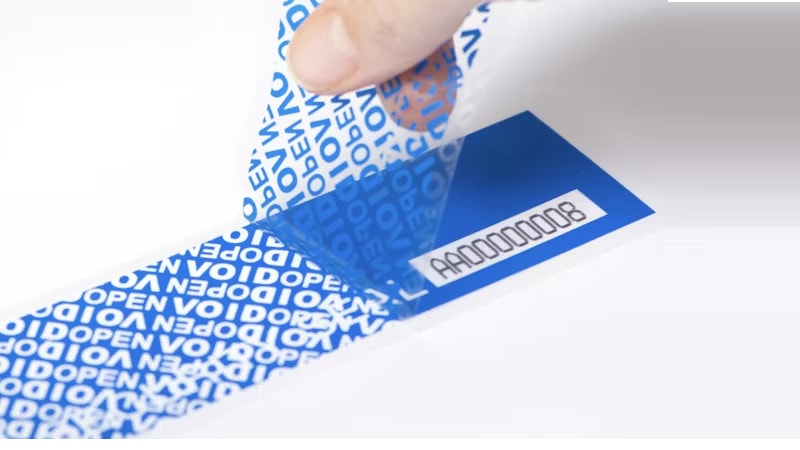
To apply partial transfer security tape correctly, start with a clean, dry surface. Any dust, oil, or moisture can reduce adhesion. Cut the required quantity of tape and press it firmly onto the application surface. Smooth it out to remove air bubbles.
Allow the adhesive to bond properly before handling the package. For maximum security, apply the tape across all openings of the package. For strong tamper protection, choose the right security tape for the surface. High-bond tapes work best on smooth materials, while low-energy tapes suit rougher surfaces.
A few common mistakes that you need to avoid when applying tape are applying it to dirty or wet surfaces and not pressing firmly enough. Avoid these mistakes for best results. Also, always test the tape on your packaging by requesting free samples before bulk use.
FAQs
Can partial transfer security tape be used in cold storage or extreme environments?
Yes, some tamper-evident tapes are designed for cold storage and harsh conditions. Choose a tape with temperature-resistant adhesive for the best results.
How can I customize partial transfer security tape with my company’s logo or branding?
Manufacturers offer custom printing with logos, barcodes, and messages. You can also choose specific colors, like red, or add security labels for branding.
Is partial transfer security tape resistant to UV light or moisture?
Many tapes include UV and moisture resistance, but performance varies. Check with suppliers and request free samples to test in your conditions.
Conclusion
Protecting shipments and products is easier with partial transfer security tape. This tamper-evident solution leaves a visible message when removed, making tampering visible. Different tape types work on various surfaces, ensuring strong adhesion and reliability. For a simple yet effective anti-tampering solution—partial transfer security tape is a smart choice!
Get Quality Partial Transfer Security Tape from Shosky
At Shosky Security, we provide high-performance partial transfer security tape. Our tamper-evident solutions offer instant evidence of unauthorized access. So, ready to take control of your security? Contact us to get started!

